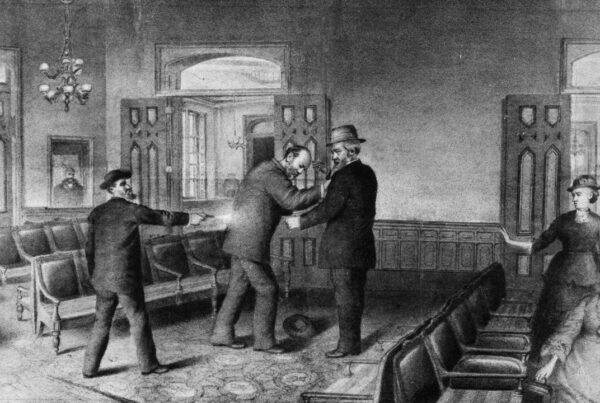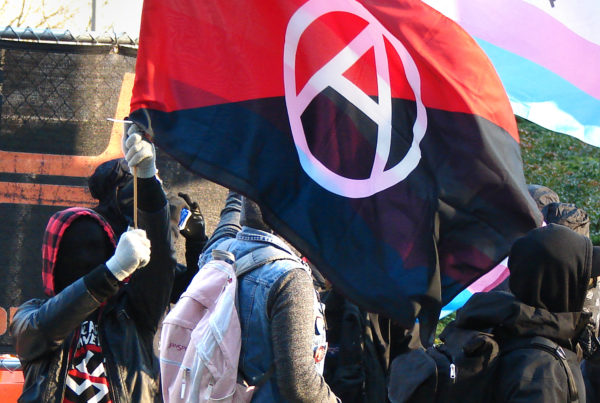Alternative Names:
The Tamil Tigers, the Eellalan Force, the Ellalan Force, the Tiger Movement, the Sangilian Force, the Air Tigers, the Black Tigers (Karum Puligal), the Sea Tigers, the Tiger Organization Security Intelligence Service (TOSIS) and the Women’s Combat Force of Liberation Tigers (WCFLT)
Location:
Sri Lanka and India
Leadership:
The Liberation Tigers of Tamil Eelam (LTTE) is a well organized group with a two-tier leadership structure. There is a military wing and a political wing, both of which is led by an overseeing central committee. This committee, and the organization as a whole, is led by Velupillai Prabhakaran.
Other prominent leaders include:
Soosai who led the Sea Tigers amphibious assault group.
Charles Anthony who led the airborne group.
Pottu Amman who led the highly secretive intelligence group.
Nadesan who led the political office.
Veerakathy Manivannam (aka Castro) who led the global network.
Most of these leaders were killed during the Eelam War IV between 2006 and 2009.
Membership:
The group is believed to have between 7,000 and 15,000 fighters.
Funding Sources:
Funding for the group has largely been acquired from sympathizers in the region, as well as diaspora communities in North America and Europe.
In addition, the group has acquired funds through what are seemingly legitimate humanitarian organizations who act as fronts for the group. The group has also been known to take part in various criminal activities to help fund their activities.
Origins
The LTTE, or more commonly known as the Tamil Tigers, are a separatist group from Sri Lanka. The group was founded in 1976 and has been participating in terrorist activities since the late 1980s. They have been pursuing an independent homeland for ethnic Tamils who they feel have been discriminated against by the majority Sinhalese in Sri Lanka.
Over the years, the LTTE has waged a violent campaign with the assistance of organized air, ground and naval forces. LTTE has successfully assassinated high ranking officials in both the Sri Lankan and Indian governments, military officials and prominent individuals in rival groups. The group is recognized for having pioneered the suicide bomb jacket, as well as the use of women in suicide attacks. The war against the Sri Lankan and Indian governments has caused more than 70,000 deaths.
In May 2009, the Sri Lankan government declared victory over the LTTE, which brought the conflict to an end. The military killed the elusive LTTE’s leader Vellupillai Prabhakaran and most of its high ranking leadership. The group conceded defeat and in a statement said it would lay down its arms.
Despite these claims, analysts are uncertain as to the level of de-militarization undertaken by LTTE, and believe that campaigns of subversion, destabilization and fundraising continue, especially among diaspora communities.
Major Attacks:
LTTE was very active between 1990 and 2009. This list attempts to highlight the principal profile attacks carried out by the group.
July 5, 1987: Carries out its first suicide bombing at the Nelliady army camp. (40 killed)
July 12, 1990: Group of suicide bombers attack a Naval Vessel in Trincomalee. (6 killed)
November 23, 1990: Two suicide attackers use a car to attack the Manakulam Army camp. (5 killed)
March 2, 1991: Suicide bomber attack kills Deputy Defence Minister Ranjan Wijeratne and 18 others. (19 killed)
May 21, 1991: Assassination of former Indian Prime Minister Rajiv Gandhi at a campaign rally in India. (19 killed)
June 21, 1991: Suicide bomber uses a truck bomb to attack the Joint Operations Command Office at the Flower Road in Colombo. (21 killed, 175 wounded)
November 16, 1992: A suicide attack kills the Sri Lankan Navy, Vice Admiral W.W.E.C. Fernando and four others. (5 killed)
May 1, 1993: Assassination of Sri Lankan President Ranasinghe Premadasa. (24 killed)
October 24, 1994: Suicide bomber in Thotalaga Junction in Colombo kills the Leader of the Opposition and United National Party Candidate Gamini Dissanayake. (59 killed)
August 7, 1995: A suicide bomber detonates explosives in Independence Square in Colombo. (22 killed, 40+ wounded)
November 3, 1995: A suicide unit infiltrates an oil storage depot causing $61 million in damage and killing respondents. (25 killed)
January 31, 1996: A suicide bomber detonates a truck bomb in front of the Central Bank in Colombo. (91 killed, 1,400 wounded)
July 4, 1996: A suicide bomber attacked a stopped motorcade in Jaffna town. (20 people killed)
October 15, 1997: Suicide bombers detonate a truck bomb at the Galadari Hotel. (18 killed, 110 wounded)
January 25, 1998: Suicide bombers attack Sri Lankan holy site, Sri Dalada Maligawa. (16 killed)
February 23, 1998: Eight suicide boats attack two Naval ships on the Point Predro coast in Sri Lanka. (79 killed)
March 5, 1998: Suicide bomber uses a mini-bus bomb to attack Maradana Police station in Colombo. (38 killed, 270 wounded)
July 29, 1999: Assassination of a Sri Lankan member of parliament, Neelan Thiruchelvam, an ethnic Tamil involved in a government-sponsored peace initiative. (3 killed)
December 18, 1999: A pair of suicide bombings in Colombo, wounding Sri Lankan President Chandrika Kumaratunga. (34 killed, 100+ wounded)
March 10, 2000: Suicide bombers attack a motorcade on a busy highway in Colombo. (20 killed, 46 wounded)
June 5, 2000: Suicide bombers use boat bombs to sink a Sri Lankan Navy gunboat. (34 killed)
June 7, 2000: Assassination of Sri Lankan Industry Minister C.V. Goonaratne. (25 killed)
October 3, 2000: National Unity Alliance candidate M.L. Baithullah is killed along with 20 others when a suicide bomber attacks a rally in Muttur town. (21 killed, 39 wounded)
August 2005: Assassination of Foreign Minister Lakshman Kadirgamar.
October 16, 2006: A suicide boat attacks a Naval convoy at Digampatana in the Habrana area of Matale district. (98 killed, 100+ wounded)
January 2008: Assassination of both a member of parliament from the opposition United National Party, T. Maheswaran and Sri Lankan Nation-Building Minister D. M. Dassanayake.
February 24, 2008: Assassination of two cadres of the political party and paramilitary group Tamil Makkal Viduthalai Pulikal (TMVP)
April 6, 2008: Assassination of Sri Lankan Highway Minister Jeyaraj Fernandopulle.
Ideological Roots:
The group is rooted in a secular nationalist ideology. They do not have ties to radical Islamic affiliates or other religious groups. LTTE believes in supporting the minority Tamil ethnic population in Sri Lanka.
Objectives:
The LTTE’s objective is to create a separate, independent homeland for the Tamils in the Northern and Eastern provinces of Sri Lanka. At one time the LTTE did control most of the Northern province. However following 2009 it lost the Eastern province and most of its control over the northern region.
Tactics:
The LTTE is a very sophisticated operation, conducting military style operations, guerilla warfare, intelligence collection and highly successful suicide attacks. The group is responsible for several high-profile assassinations across Sri Lanka and India. The LTTE has also sunk several Sri Lankan naval vessels, and caused significant casualties to security and military forces.
The group is known for pioneering the suicide bomb jacket, as well as the use of women in their attacks. The vast majority of the LTTE’s attacks have been carried out with the use of explosives and suicide bombs. In some cases, they utilized small arms, rocket propelled grenade launchers, and mortars.
Updated on January 15, 2016.







